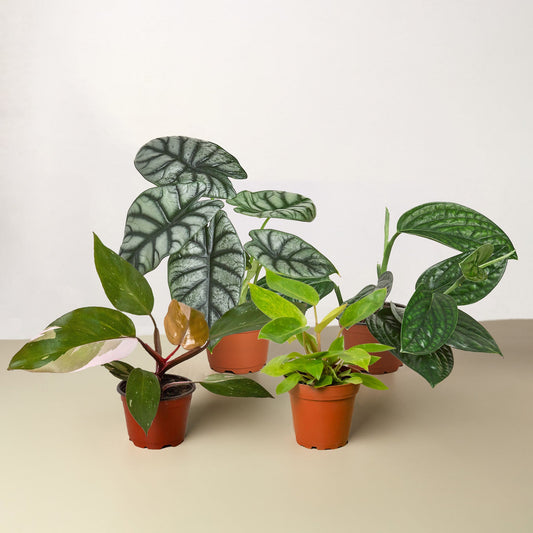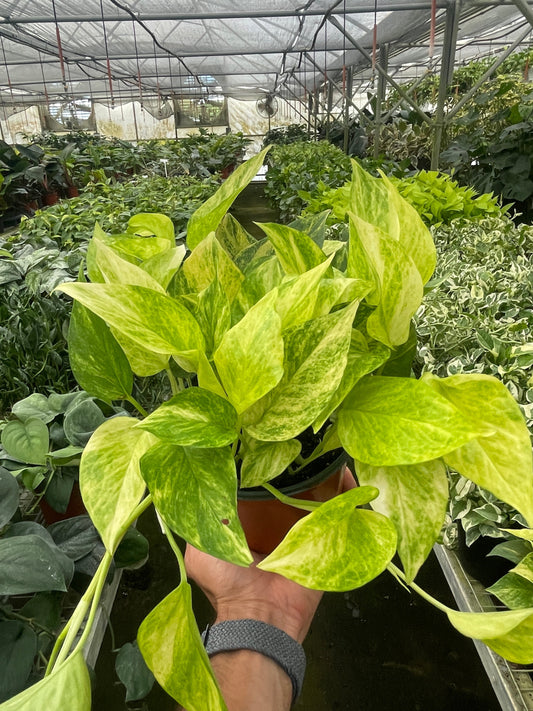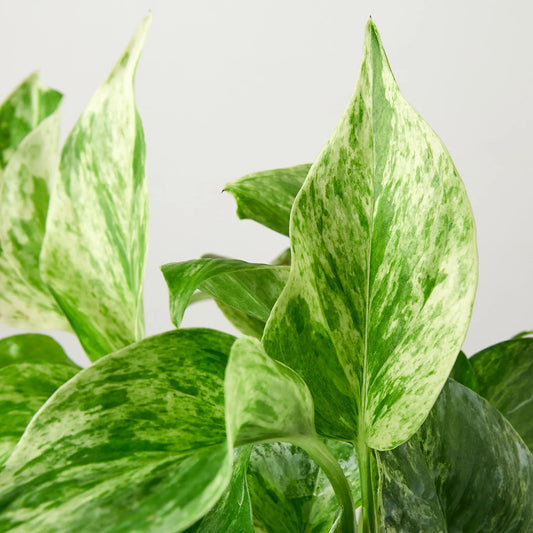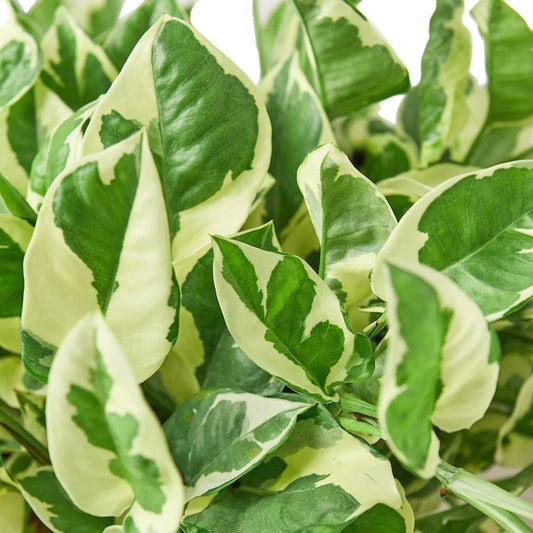Fittonia Aerial Roots: Everything You Need to Know
Cafe Planta Team
If you’re a fan of houseplants, you’ve likely encountered the striking leaves of the Fittonia, commonly known as the nerve plant. But have you ever noticed those little roots that sometimes appear above the soil? These are called aerial roots, and they might leave you wondering what they're doing there.
In this article, we’ll explore everything about Fittonia aerial roots, from why they form to how they affect the health of your plant. We'll also discuss what you can do to manage them and incorporate them into your plant care routine. Let’s get started!
What Are Aerial Roots?
Aerial roots might sound like something you'd find in a botanical textbook, but they're a fascinating aspect of many plants, including our beloved Fittonia. Simply put, aerial roots are roots that grow above the ground. They’re often seen in plants like orchids and philodendrons, but they can appear in Fittonias too.
These roots serve various purposes depending on the plant species. For some, they're all about stability, helping the plant anchor itself to surfaces like rocks or trees. For others, they're designed to absorb moisture and nutrients directly from the air. In the case of the Fittonia, aerial roots can form when the plant senses a need for more stability or moisture.
Interestingly, the appearance of aerial roots in a Fittonia might indicate certain environmental conditions or care needs. So, when you spot them, it’s a good time to check on your plant's overall health and care routine. But don't worry, we'll break down what to look for and how to respond!
Why Do Fittonias Develop Aerial Roots?
The development of aerial roots in Fittonias is usually a response to environmental factors. Here are some reasons why these roots might pop up:
- Humidity Needs: Fittonias thrive in humid environments. If the air is too dry, your plant might start growing aerial roots to reach out for moisture in the air.
- Stability and Support: When a plant needs more support, especially if it’s growing in less-than-ideal conditions, aerial roots can help stabilize it.
- Expanding Nutrient Access: Sometimes, aerial roots can develop to help the plant access additional nutrients from the air or another nearby surface.
While these roots are a natural response, they can signal that your plant might need some adjustments in care. It's a bit like when you find yourself craving a glass of water—you might need to up your hydration game!
How to Manage Aerial Roots in Fittonia
So, you've noticed those little roots on your Fittonia—what now? Managing aerial roots is straightforward, and it mostly involves ensuring your plant is living its best life. Here’s how:
- Evaluate Humidity Levels: Since humidity is a common factor, consider increasing the moisture around your plant. This could mean misting your Fittonia regularly or placing a humidifier nearby.
- Check Soil and Watering Habits: Ensure your plant is getting the right amount of water. Fittonias like their soil to be consistently moist but not waterlogged. Adjust your watering schedule if needed.
- Pruning: If the aerial roots are excessive or unsightly, you can trim them back. Just be gentle to avoid damaging the plant.
Remember, aerial roots aren't inherently bad. They’re just your plant’s way of adapting to its environment. A little adjustment here and there can help your Fittonia feel more at home!
Impact of Aerial Roots on Plant Health
Now, you might be wondering if these roots are good or bad for your Fittonia. The truth is, they’re generally harmless and often beneficial. Here’s why:
- Improved Moisture Intake: In dry conditions, aerial roots can help your plant absorb more moisture from the air, ensuring it stays hydrated.
- Added Stability: If your Fittonia is growing a bit wild, aerial roots can provide additional support, helping the plant maintain its structure.
- Adaptation Indicator: The presence of aerial roots can signal that your plant is adapting to its environment, which is a positive sign of resilience.
While it's good to monitor the situation, there's no need to panic if you see aerial roots. Think of them as a quirky part of your plant’s personality!
Incorporating Aerial Roots into Interior Design
For those of us who love a bit of plant styling, aerial roots can actually add an interesting aesthetic to your space. Here are some ideas on how to make the most of them:
- Vines and Trellises: You can use aerial roots to train your Fittonia onto a small trellis or let it vine naturally. This adds a dynamic element to your plant display.
- Hanging Displays: If you have a Fittonia with long aerial roots, consider placing it in a hanging planter. The roots will add a unique texture to the hanging foliage.
- Artistic Arrangements: Embrace the wild look by arranging your Fittonia with other plants that have similar growth habits. It creates a lush, jungle-like atmosphere.
Aerial roots don’t have to be a nuisance; they can be part of the artistic expression in your home. With a bit of creativity, you can use them to enhance the beauty of your living space.
Common Issues with Aerial Roots
While aerial roots are typically harmless, there are a few potential issues to watch out for:
- Root Rot: If aerial roots are being buried in soil, they can lead to over-moisture and root rot. Ensure roots stay above the soil line.
- Pest Attraction: Aerial roots can sometimes attract pests like gnats if the environment is too moist. Keep an eye out for any unusual insect activity.
- Overcrowding: In some cases, too many aerial roots can crowd the plant, making it look messy. Pruning can help maintain a tidy appearance.
By keeping these issues in mind, you can ensure that your Fittonia remains healthy and vibrant. Regular monitoring and simple care tweaks can prevent these problems from taking root!
Fittonia Care Basics
While we're on the topic of Fittonias, let's quickly touch on their basic care needs. These plants are known for their vibrant leaves and thrive with a bit of special attention:
- Light: Fittonias prefer bright, indirect light. Too much direct sunlight can scorch their leaves, while too little light can dull their vibrant colors.
- Watering: Keep the soil consistently moist but not soggy. Fittonias don’t like to dry out completely, so regular watering is key.
- Temperature: These plants enjoy warm temperatures and should be kept away from cold drafts.
- Humidity: As we've discussed, Fittonias love humidity. Consider grouping them with other plants or using a humidity tray to keep them happy.
With these basics in mind, you’ll be well on your way to growing a healthy Fittonia that might just show off a few aerial roots!
FAQs About Fittonia Aerial Roots
Let’s tackle some frequently asked questions about Fittonia aerial roots:
- Can I cut off the aerial roots? Yes, you can trim them if they’re getting too long or unsightly. Just be gentle and use clean scissors.
- Will aerial roots harm my plant? Generally, no. They’re a natural part of the plant’s growth and can even benefit its stability and moisture intake.
- Do all Fittonias grow aerial roots? Not necessarily. It depends on the plant's environment and care conditions.
These questions often pop up with plant care, and understanding the answers can help you feel more confident in your plant parenting journey.
Embracing the Quirks of Fittonia
Every plant has its quirks, and Fittonias are no exception. Aerial roots are just one of the ways these plants adapt and thrive. Whether you find them charming or a bit unusual, remember that they’re a normal part of your plant’s life.
By understanding what these roots are telling you, you can adjust your care routine to better suit your Fittonia’s needs. It’s all about listening to your plant and responding with a little love and attention. Plus, who doesn’t love a plant with a little personality?
Final Thoughts
In summary, Fittonia aerial roots are an intriguing aspect of plant care that signals adaptation and resilience. They offer insight into your plant's environment and needs, allowing you to make simple adjustments for improved health and aesthetics.
At Cafe Planta, we're passionate about helping you care for your plants. Whether you're looking for new additions or need advice on plant care, we're here to support you. Feel free to email us or reach out on Instagram. We believe plants bring us closer to nature and each other, and we're excited to be part of your plant journey.



















